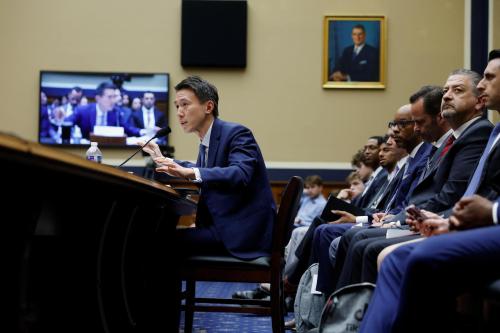J.P. Morgan Chase & Co. announced last week that it had agreed to settle a multiyear probe by the Securities and Exchange Commission. The probe alleges that Bear Stearns (which J.P. Morgan acquired in early 2008) failed to disclose key information about the mortgage-backed securities it sold—such as the low quality of the mortgages underlying them. Under the proposed settlement, J.P. Morgan will pay an undisclosed amount, but no individuals will be charged.
The agreement punishes the wrong people. Instead of fining J.P. Morgan—which acquired a failing firm at the behest of the federal government—the SEC should take action against the individual executives who committed the alleged wrongdoing.
Typically, a corporation that buys another assumes all of its financial obligations, including its legal liabilities. The logic here is that the buyer will look into these obligations—perform “due diligence”—and adjust its offer price to account for any potential legal liabilities of the company that it wants to buy. This logic holds, for instance, in the case of the federal government’s billion-dollar lawsuit against Bank of America regarding alleged wrongdoings by Countrywide Financial before the merger of those two companies.
But J.P. Morgan’s acquisition of Bear Stearns was largely completed over the course of a single weekend at the behest of the federal government. Recall that on the evening of Thursday, March 13, 2008, Bear Stearns was forced to seek an emergency loan from the New York Federal Reserve in order to continue operations. The next day—Friday, March 14—its stock dropped by nearly 50%.
Federal officials believed that Bear Stearns would not survive another business day—and that its failure could trigger a wave of panic in the financial markets. So Federal Reserve Chairman Ben Bernanke and Treasury Secretary Hank Paulson took the exceptional step of asking J.P. Morgan to make an offer to purchase Bear Stearns. The deal needed to be announced—and the framework for the deal completed—before the Asian stock markets opened on Monday, March 17.
With that tight deadline, J.P. Morgan could never have completed its due diligence. For this reason, J.P. Morgan initially begged off—but acquiesced only after the regulators pressed hard. The firm agreed to absorb some of the costs of Bear’s toxic assets.
As Rep. Barney Frank (D., Mass.), the co-author of the Dodd-Frank financial reforms, said last month, J.P. Morgan “would never have sought to acquire [Bear Stearns] absent that urging” from the federal government. The SEC’s problematic actions in this case have broader implications for the future. If J.P. Morgan is punished for the actions of Bear Stearns, government officials might not be able to find any “white knights” when the next crisis arises.
So who should be held accountable if Bear Stearns did engage in a massive fraud involving mortgage-backed securities? Optimally, government officials should bring criminal or civil suits against the responsible senior officials at Bear.
To win a criminal case, however, a prosecutor must generally prove intentional misconduct by the defendant beyond a reasonable doubt. That is a tough standard to meet, especially when midlevel executives follow bad policies prevalent at a firm. And the Justice Department could not meet the standard when it tried to go after two former hedge-fund managers at Bear Stearns in 2009.
There is a better approach: The SEC can bring civil cases against the top executives who set the bad policies at a troubled institution. The agency has the authority to bring judicial or administrative proceedings against controlling persons of a firm for the acts of their subordinates. The remedies include imposition of significant fines on senior executives and barring them from the securities industry.
In the past when the SEC has settled such suits, senior executives were usually not required to admit the validity of the allegations. In such cases, any financial penalties are typically covered by insurance policies or indemnification, rather than being paid out of the executives’ pockets. When executives are required to pay personally, there generally must be a voluntary admission or court judgment of culpability.
In the future, if regulators have provided substantial financial assistance to a troubled institution, they should litigate any charges of serious misconduct directly against its senior executives—settling only if these executives admit wrongdoing or waive their insurance and indemnification from the institution.
This approach would more effectively punish executive misconduct. And regulators would not feel compelled to seek damages for such misconduct from firms like J.P. Morgan that made acquisitions requested by the government.


Commentary
Op-edThe SEC vs. J.P. Morgan
November 13, 2012